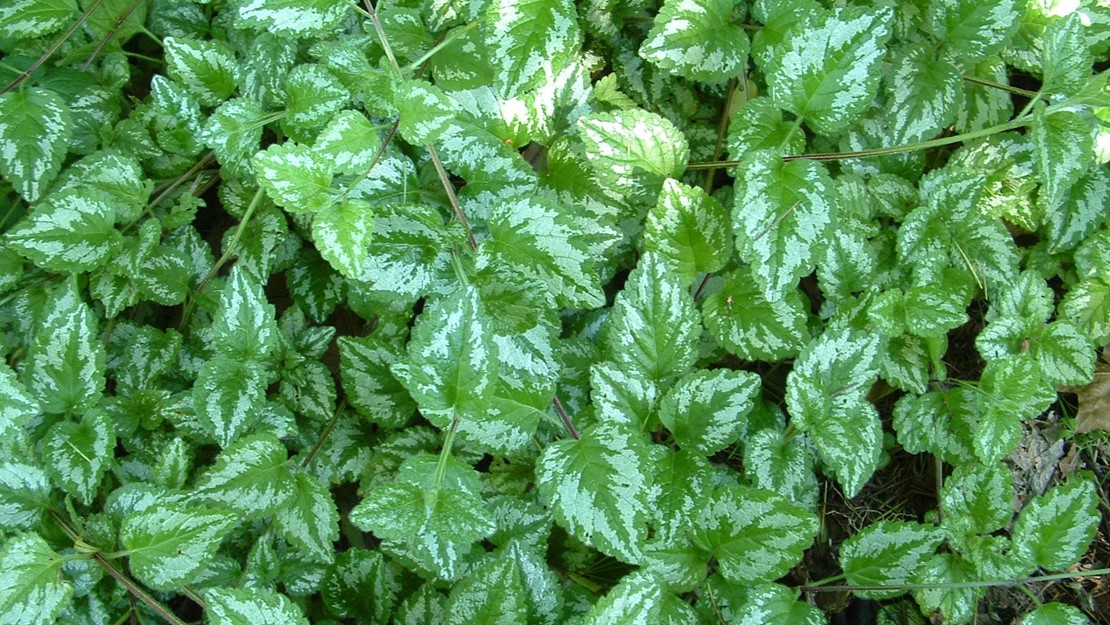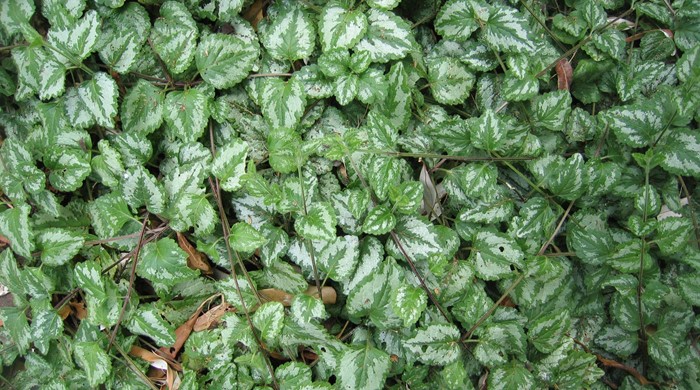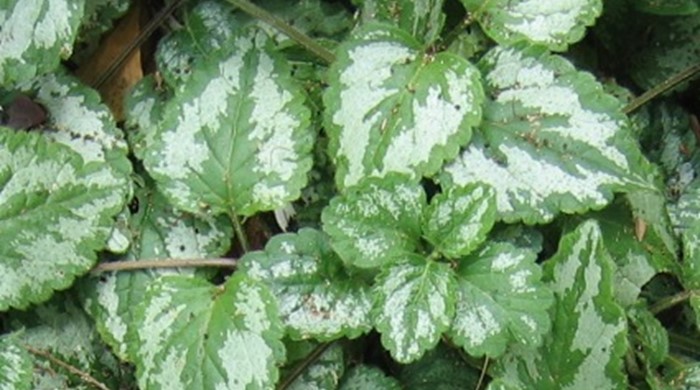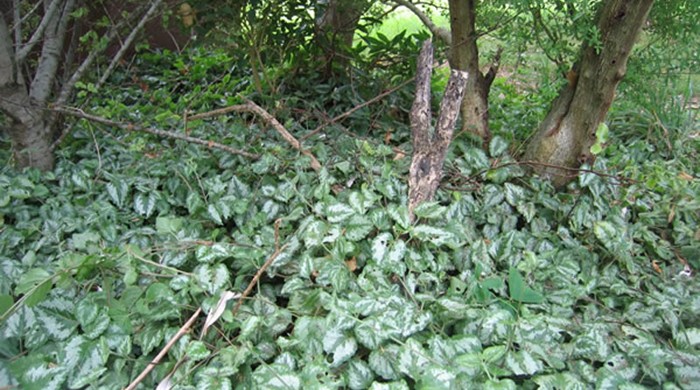Lamium galeobdolon syn. Galeobdolon luteum syn. Lamiastrum galeobdolon
Artillery plant
Also known as:
Aluminium plant
Family: Lamiaceae
Origin: Eurasia

Regional Pest Management Plan (RPMP) status
- National Pest Plant Accord Species
- Whole region — Sustained control
General description
Perennial groundcover herb < 50 cm tall. Mat-forming and stoloniferous. Stems are square and densely hairy. Leaves are on a long petiole and are mint-like, < 8 x 6 cm, opposite, aromatic, pointed and coarsely toothed, with silver/grey patches on top and a hairy underside. Flowers are yellow, hairy and tubular, and are borne in dense axillary whorls in summer – autumn.
What you need to know
To help protect our environment:
- You must not breed, distribute, release or sell artillery plant. As artillery plant is a National Pest Plant Accord species, these restrictions apply within the Auckland region and across the whole of New Zealand.
- You must not plant artillery plant within the Auckland region, unless you are transferring an existing plant on your land to another location within the boundaries of the same property.
- You must destroy any artillery plant on land that you occupy if it has been planted in breach of the above rules and you are directed to do so by an authorised person.
Habitats
Disturbed forest, scrubland, fernland, forest and riparian margins, floodplains, moist habitats.
Dispersal
Vegetative spread from stolons, dispersed by soil movement.
Impact on environment
Forms dense mats, smothering native vegetation and preventing native regeneration in disturbed bush, scrubland, fernland and forest margins.
Control
Site Management
Follow up treated areas 3 times per year. Encourage natural regeneration of native plants or replant treated areas where possible after 2-3 treatments to establish dense ground cover and minimise reinvasion.
Recommended approaches
Physical control
Method: Dig out or pull out.
Plant parts requiring disposal: All parts.
Disposal options: Compost in a composting weed bag or remove to greenwaste or landfill.
Biocontrol
Biocontrol is currently not available for this species.
Community agrichemical control recommendations
Basic Growsafe certified: For small infestations - foliar spray with 0.5g metsulfuron-methyl per 1L of water.
Certified Handler/Experienced agrichemical user: For medium to large infestations -
foliar spray with 5g metsulfuron-methyl per 10L of water and 20ml penetrant.
Caution: When using any herbicide or pesticide please read the label thoroughly to ensure that all instructions and safety requirements are followed.






